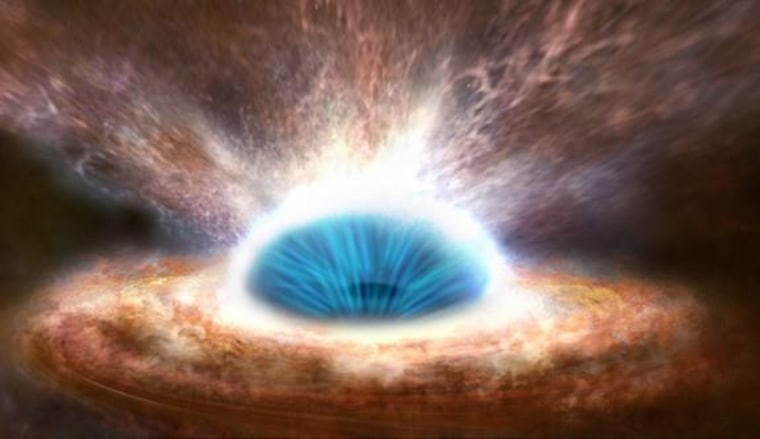Giant winds from black holes can blast gas through galaxies at extraordinary speeds, pulling the plug on star formation, researchers say.
This finding reveals how black holes can direct the fates of entire galaxies, scientists added.
The hearts of most and possibly all galaxies harbor supermassive black holes millions to billions of times the mass of the sun. Many are relatively quiet, like the one sitting at the center of the Milky Way. However, others, known as active galactic nuclei, voraciously devour their surroundings, potentially creating black hole winds.

"As they do that, the material is also crushed and squeezed in a sort of vortex that astrophysicists call an accretion disk," said lead study author Francesco Tombesi, an astrophysicist at NASA Goddard Space Flight Center in Greenbelt, Maryland, and at the University of Maryland, College Park. "Friction in the disk causes the material to heat up to very high temperatures and to be very luminous, up to more than a trillion times the luminosity of the sun. The pressure from this radiation can then be so high that it can effectively push material away in a wind."
Prior research suggested there was a close link between the size of active galactic nuclei and the size of the galaxies they dwell in. Scientists had suspected that these active galactic nuclei could drive giant winds of gas and dust through their galaxies that could blow away massive amounts of raw star-building material, quench star formation and influence the evolution of the black holes' galaxies.
Now researchers have the first observational evidence confirming that a supermassive black hole can power these huge outflows.
The scientists investigated the supermassive black hole at the center of a galaxy known as IRAS F11119+3257, which is about 2.6 billion light-years away from Earth. Prior research estimated the black hole was about 16 million times the mass of the sun.
Astronomers had previously detected winds very close to black holes using X-ray telescopes and had also seen much larger outflows of gas through infrared observations. But this is the first time scientists have detected both the close-in winds and the outflows of gas in the same galaxy.
"The supermassive black hole is sucking interstellar gas, but at the same time it is affecting the star-formation history of the galaxy with its powerful winds," Tombesi said. "Astrophysicists describe this process as a feedback between the central supermassive black hole and the galaxy, which on very long timescales regulates their co-evolution."
The scientists detailed their findings in the March 26 issue of the journal Nature.
— Charles Q. Choi, Space.com
This is a condensed version of an article that appeared on Space.com. Read the entire story here. Follow Space.com @Spacedotcom, Facebook and Google+.